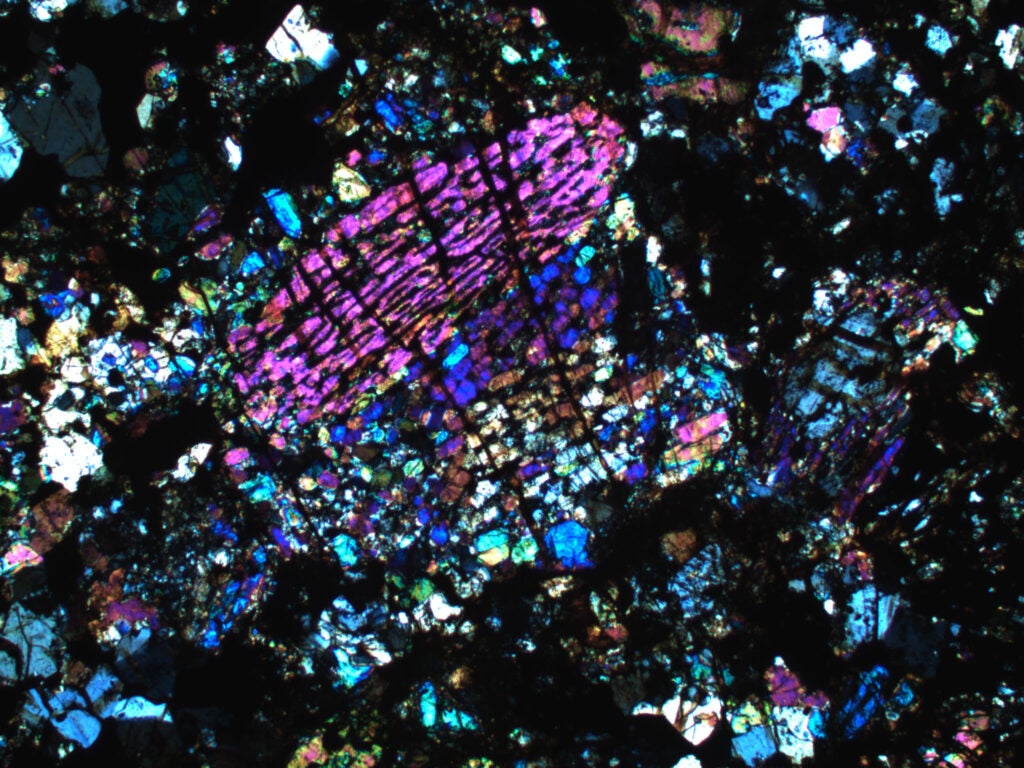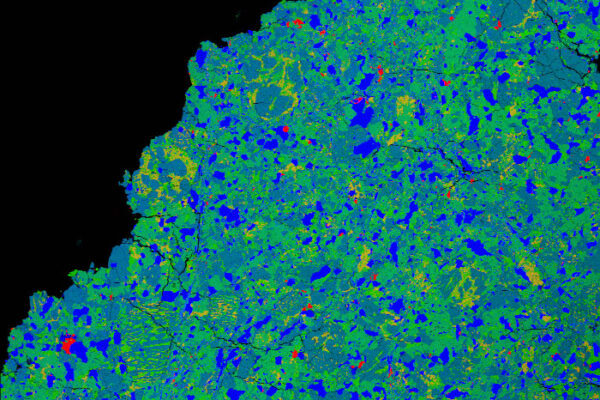AUSTIN, Texas — One Friday evening in 1992, a meteorite ended a more than 150 million-mile journey by smashing into the trunk of a red Chevrolet Malibu in Peekskill, New York. The car’s owner reported that the 30-pound remnant of the earliest days of our solar system was still warm and smelled of sulfur.
Nearly 30 years later, a new analysis of that same Peekskill meteorite and 17 others by researchers at The University of Texas at Austin and the University of Tennessee, Knoxville, has led to a new hypothesis about how asteroids formed during the early years of the solar system.
The meteorites studied in the research originated from asteroids and serve as natural samples of the space rocks. They indicate that the asteroids formed though violent bombardment and subsequent reassembly, a finding that runs counter to the prevailing idea that the young solar system was a peaceful place.
The study was published in print Dec.1 in the journal Geochimica et Cosmochimica Acta.
The research began when co-author Nick Dygert was a postdoctoral fellow at UT’s Jackson School of Geosciences studying terrestrial rocks using a method that could measure the cooling rates of rocks from very high temperatures, up to 1,400 degrees Celsius.
Dygert, now an assistant professor at the University of Tennessee, realized that this method — called a rare earth element (REE)-in-two-pyroxene thermometer — could work for space rocks, too.
“This is a really powerful new technique for using geochemistry to understand geophysical processes, and no one had used it to measure meteorites yet,” Dygert said.
Since the 1970s, scientists have been measuring minerals in meteorites to figure out how they formed. The work suggested that meteorites cooled very slowly from the outside inward in layers. This “onion shell model” is consistent with a relatively peaceful young solar system where chunks of rock orbited unhindered. But those studies were only capable of measuring cooling rates from temperatures near about 500 degrees Celsius.
When Dygert and Michael Lucas, a postdoctoral scholar at the University of Tennessee who led the work, applied the REE-in-two-pyroxene method, with its much higher sensitivity to peak temperature, they found unexpected results. From around 900 degrees Celsius down to 500 degrees Celsius, cooling rates were 1,000 to 1 million times faster than at lower temperatures.
How could these two very different cooling rates be reconciled?

The scientists proposed that asteroids formed in stages. If the early solar system was, much like the old Atari game “Asteroids,” rife with bombardment, large rocks would have been smashed to bits. Those smaller pieces would have cooled quickly. Afterward, when the small pieces reassembled into larger asteroids we see today, cooling rates would have slowed.
To test this rubble pile hypothesis, Jackson School Professor Marc Hesse and first-year doctoral student Jialong Ren built a computational model of a two-stage thermal history of rubble pile asteroids for the first time.
Because of the vast number of pieces in a rubble pile —1015 or a thousand trillions — and the vast array of their sizes, Ren had to develop new techniques to account for changes in mass and temperature before and after bombardment.
“This was an intellectually significant contribution,” Hesse said.
The resulting model supports the rubble pile hypothesis and provides other insights as well. One implication is that cooling slowed so much after reassembly not because the rock gave off heat in layers. Rather, it was that the rubble pile contained pores.
“The porosity reduces how fast you can conduct heat,” Hesse said. “You actually cool slower than you would have if you hadn’t fragmented because all of the rubble makes kind of a nice blanket. And that’s sort of unintuitive.”
Tim Swindle of the Lunar and Planetary Laboratory at the University of Arizona, who studies meteorites but was not involved in the research, said that this work is a major step forward.
“This seems like a more complete model, and they’ve added data to part of the question that people haven’t been talking about, but should have been. The jury is still out, but this is a strong argument.”
The research was supported by NASA. The Smithsonian National Museum of Natural History supplied samples of meteorites for the study.




